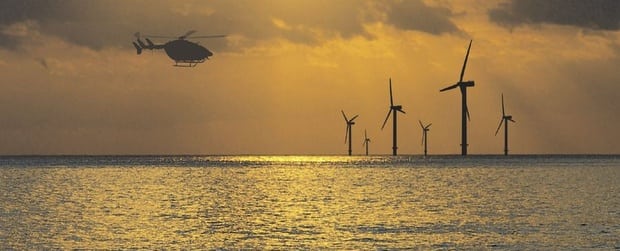How to Overcome Challenges to the U.S.’s Offshore Wind Energy Goals
Credit to Author: Aaron Larson| Date: Thu, 11 Aug 2022 14:42:42 +0000

Lofty goals have been established in the U.S. for the offshore wind industry. The U.S. Department of Energy, Department of the Interior, and Department of Commerce announced a national goal in March 2021 to deploy 30 GW of offshore wind capacity by 2030. That would mark a significant increase from the 42 MW of offshore wind energy currently operating in the states.
Meanwhile, the California Energy Commission (CEC) adopted a report yesterday establishing offshore wind goals. It seeks to develop 2 GW to 5 GW of offshore wind by 2030, and 25 GW by 2045. California has no offshore wind installed today. Other states also have individual goals.
The challenges to reaching these goals are many. “From my perspective, looking at where we are now, there are some significant challenges that the U.S. has to face,” Chris Cowland, vice president of Global Offshore Wind with Worley, said as a guest on The POWER Podcast.
Cowland, who is based in the UK and has spent the last 22 years working in the offshore sector, said the timeline is a “huge challenge,” noting that adding 30 GW of capacity by 2030 will not be easy. “There’s going to be a lot of pressure on governments to look at different policies—how they can accelerate. There’s going to be pressure on fabrication yards and supply chains, the whole remit of how are we actually going to get things to market much, much quicker,” he said. “So, that’s going to be a significant challenge, particularly just taking, as it stands at the moment, about eight years to get from auction to first power.”
Auction prices are another challenge, as these affect project costs. Cowland said there is a lot of competition coming into the U.S. market. In turn, what’s happening is auction prices are higher. While this shows confidence in the sector, Cowland said it also sets new benchmarks for future auctions. “It will be interesting to see how the next few auctions pan out,” he said.
The lack of local content poses an obstacle too. Cowland said local content is “absolutely fundamental.” Yet, even as he touted his support for developing local resource markets, Cowland said that local content could adversely affect costs, because developed regions such as the U.S. have difficulty competing against suppliers in Asia and other low-wage areas of the world. While shipping costs are lower for local suppliers, other costs can outweigh the benefits, resulting in competitive advantages for foreign suppliers.
“The U.S. needs to think slightly differently on that, in terms of: How are we going to drive local content? How are we going to drive lowest possible cost? And I think the answer there is looking at innovation, digitally enabled platforms, and things like that,” said Cowland.
The global nature of the supply chain presents the last challenge Cowland mentioned. “Offshore wind is a global market. No matter where you go around the globe, you’ve got the same people or the same companies delivering the same solutions,” he said. “And there is a shortage at the moment, as it stands, this global supply chain—that capacity—it’s really, really difficult.
“And the amount of investment that’s going into the sector is massive, but that investment at the moment can’t quite match the demand. And what with the U.S., coupled with Asia at the moment, set to dominate offshore wind in the second half of this decade, I think the U.S. is going to really struggle to pull on that global supply chain.”
The area that Cowland believes the U.S. has perhaps the greatest potential to exploit revolves around standardization. “If we want to hit the ambitions of our governments, you need to stop reengineering and actually start driving standardization into the sector,” Cowland said.
“Once you’ve got that standardization, that really then allows us to start to think about how do you scale-up the infrastructure to really support the development of these wind farms, whether it’s new port facilities—What sort of deep-water access do we need? What are the laydown areas that we need? What sort of O&M [operations and maintenance] hubs do we need? And there’s going to be a lot of supply bases that we’re going to need around us to support these facilities,” said Cowland.
“Investment isn’t the obstacle here. It’s actually how do you get the investment into the supply chain as quickly as we need it,” he said.
To hear the full interview, which includes much more about offshore wind opportunities, floating platforms, how the oil and gas industry could help the offshore wind industry develop, schemes to take advantage of installing turbines further offshore, and more, listen to The POWER Podcast. Click on the SoundCloud player below to listen in your browser now or use the following links to reach the show page on your favorite podcast platform:
For more power podcasts, visit The POWER Podcast archives.
—Aaron Larson is POWER’s executive editor (@AaronL_Power, @POWERmagazine).
The post How to Overcome Challenges to the U.S.’s Offshore Wind Energy Goals appeared first on POWER Magazine.